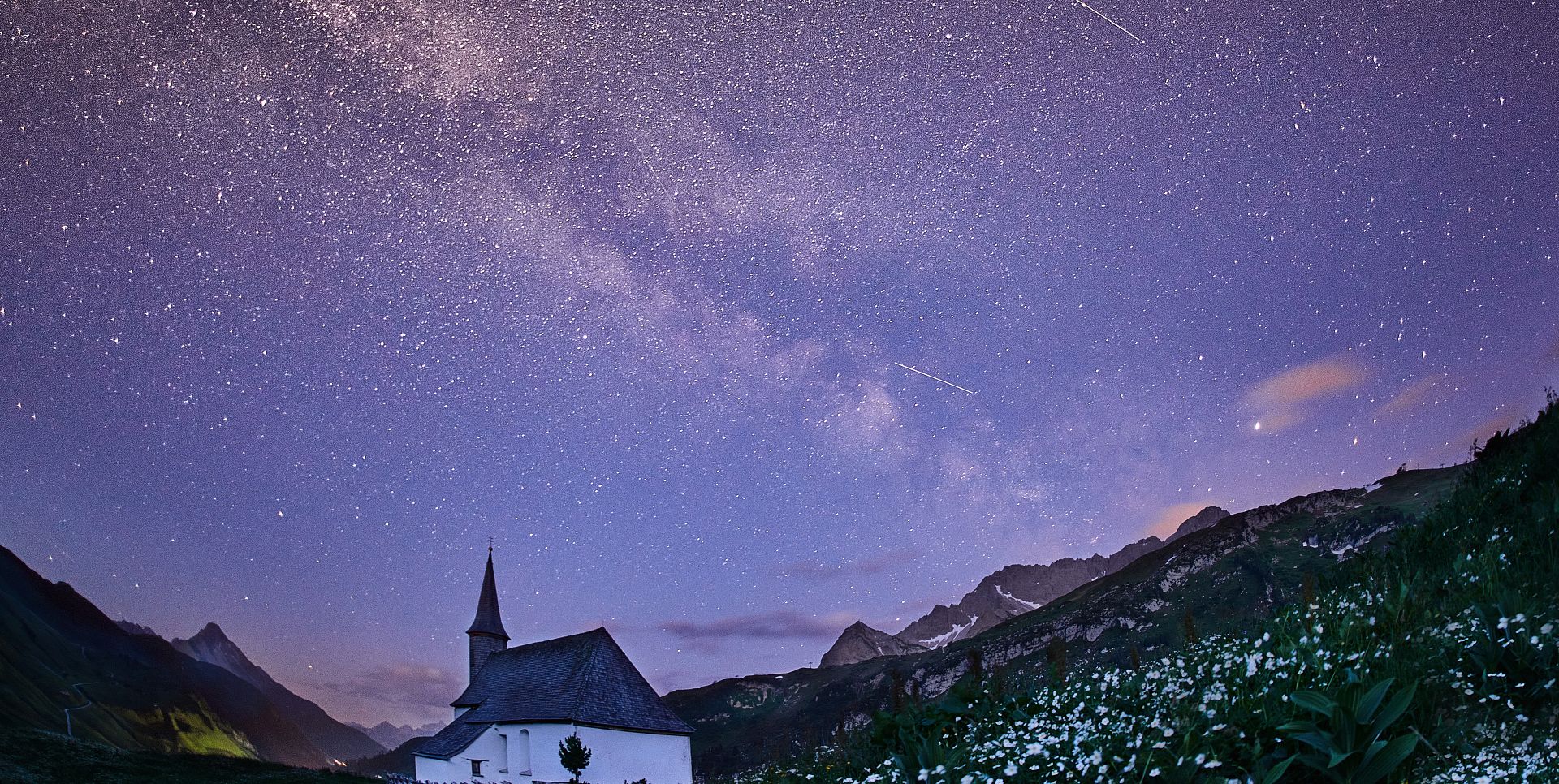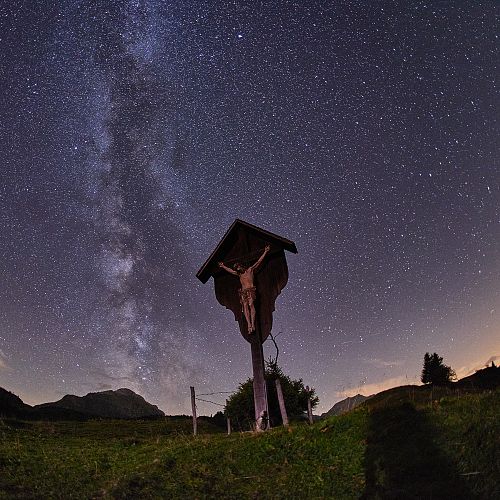
Stargazing
Reach for the stars with us!
Silence, an invisible chirping of crickets, the air is clear, darkness.
And high above this peaceful natural scene: the overwhelming twinkling of the starry sky. Every now and then, a shooting star makes its luminous trail across the firmament.

Since time immemorial, we have been fascinated by this world of stars, always looking up in wonder and imagining what might be hidden there. Just go out in the evening, sit down and watch the starry sky, and indulge in our thoughts. The incredible vastness of the universe seems almost surreal. It enchants, fascinates.
No light pollution and therefore an undisturbed view of the stars, of the full splendour of our galaxy, of the natural phenomenon of the Milky Way - it is a special feature, almost a privilege.
And we in Warth-Schröcken are privileged because: due to the low light pollution, our mountain villages are perfect for stargazing and open up an unobstructed view of the sky, sun, moon and stars. Find out where the best spots are, what you can see there and what you need to bear in mind here!

Perseids: the most beautiful shooting star night of the year!
Perseids are an annually recurring meteor stream that burns up in the Earth's atmosphere. The Perseids are therefore the most impressive meteor swarm in our latitudes. They owe their name to the constellation of Perseus, from which they appear to come.
When?
From 17 July to 24 August 2024, the Perseids will once again be visible in the night sky. The most shooting stars are expected to be seen on 12 August 2024, when the Perseids are expected to reach their peak. Between 21:00 and 06:00 in a north-easterly direction, they should be particularly easy to observe.
Zur richtigen Zeit am richtigen Ort.

Hochtannberg-Pass, Simmel:
If you want, you can walk up to the Simmel and watch the starry sky from there.
Kalbelesee in the direction of Körbersee:
A little away from the road, along the path towards Körbersee, there are numerous spots for quiet stargazing.
Apps such as "Dark Sky Finder" can also help you find the perfect spot.
Our tips & tricks for stargazing!
- Avoid light sources: the darker the surroundings, the more stars appear in the night sky. However, this can be overwhelming, especially at the beginning, when we can no longer see the stars because of the Milky Way! It can therefore also be helpful at the beginning to explore the night sky and discover constellations in brighter places or under a brighter moon.
- The sky is darkest at new moon and the starry sky can be marvelled at in its full splendour.
- Observe the weather: if there is haze or clouds, this can spoil the stargazing fun.
- Sky maps, constellations, apps such as "Stellarium" or "SkyView" and landmarks such as the North Star help you to orientate yourself in the night sky.
- The best star chart is useless if you can't see anything: a headlamp will help you to get to your place safely and study the star chart - but bear in mind that it will always take a few minutes after the light until your eyes have adjusted to the darkness again.
- You should be comfortable and bring time and patience for stargazing: Don't forget a blanket or deckchair, food and warm clothing!
- If you want to see more, don't forget binoculars or even a telescope.